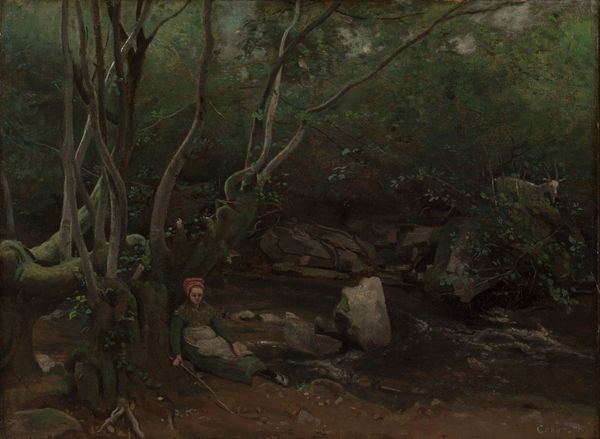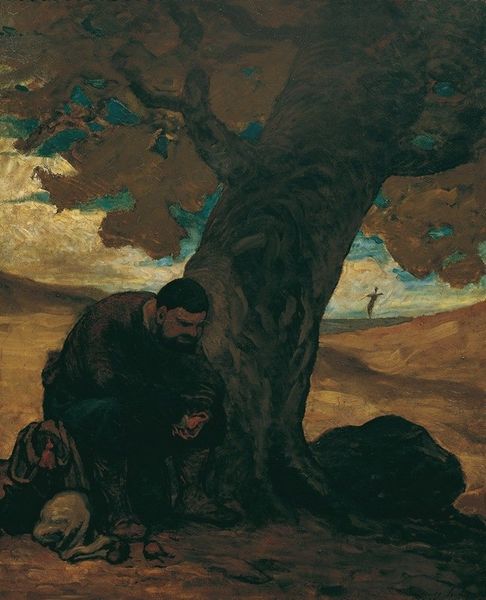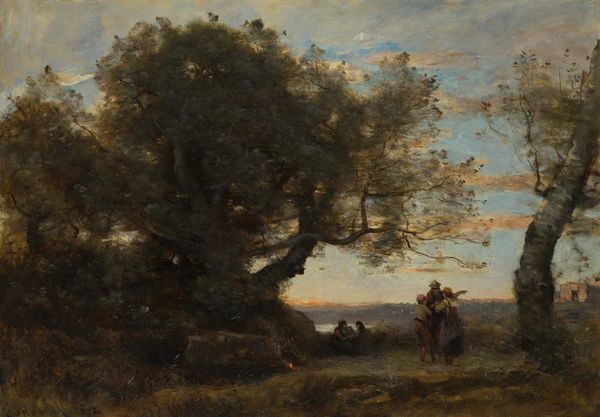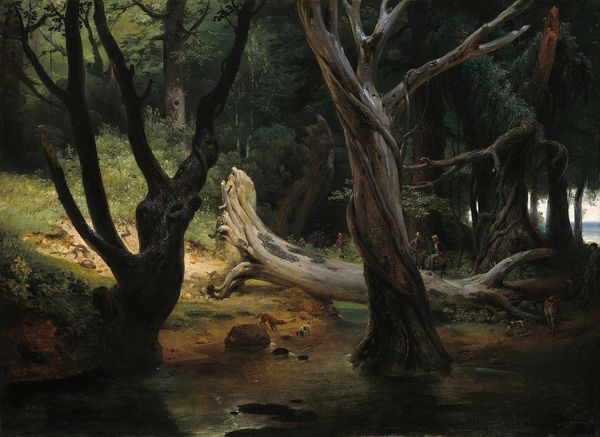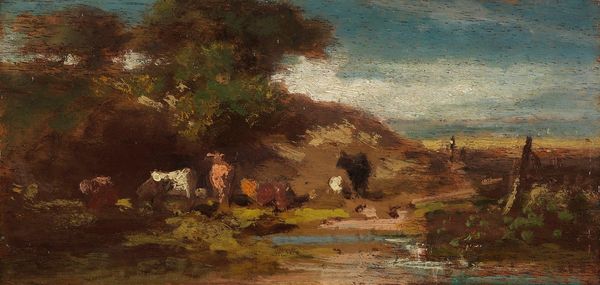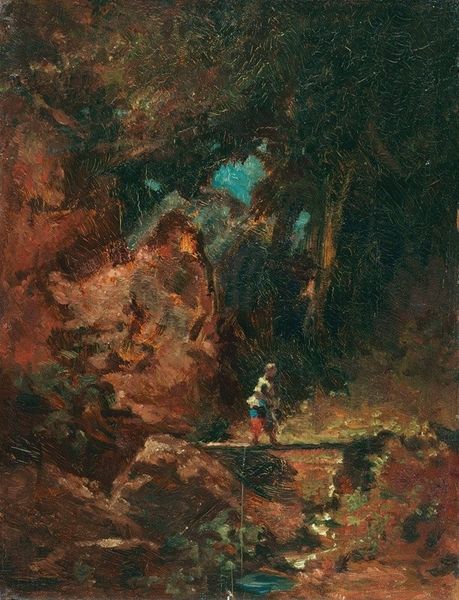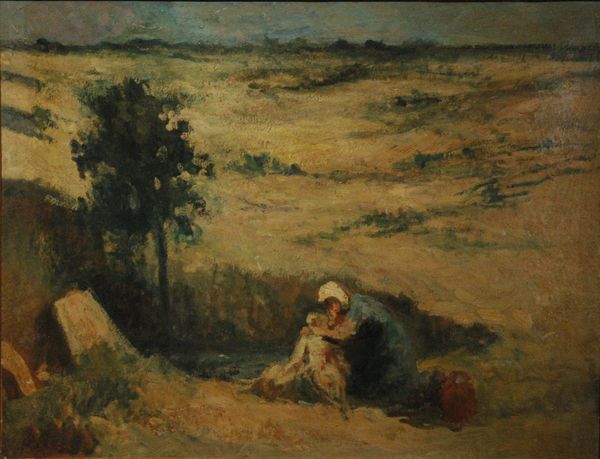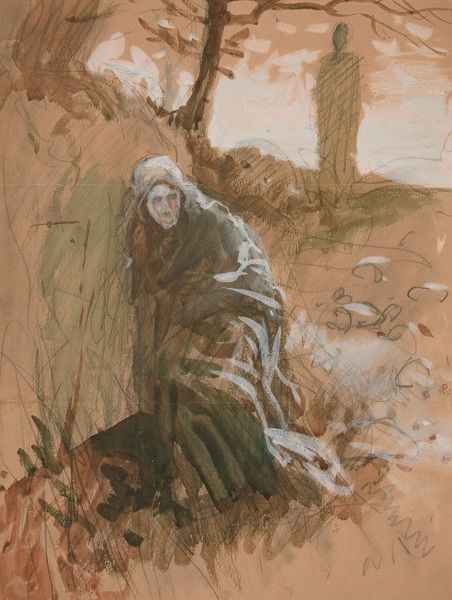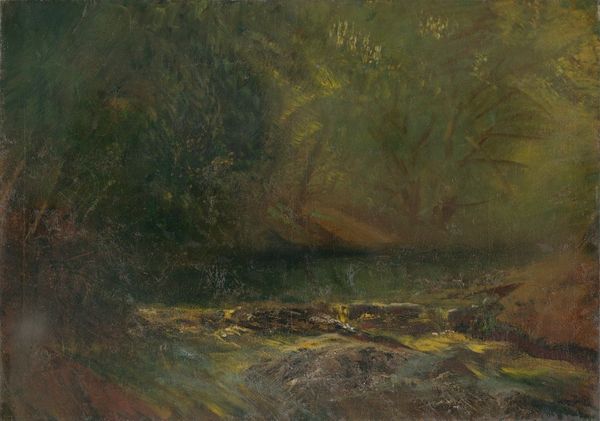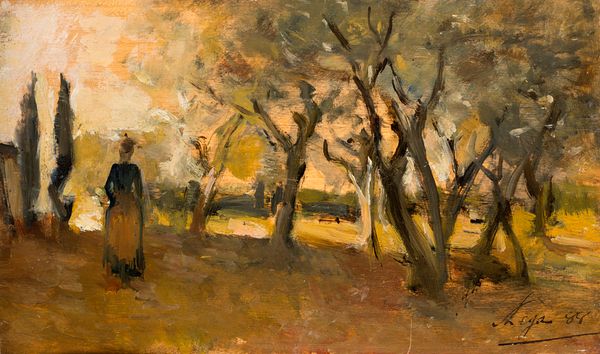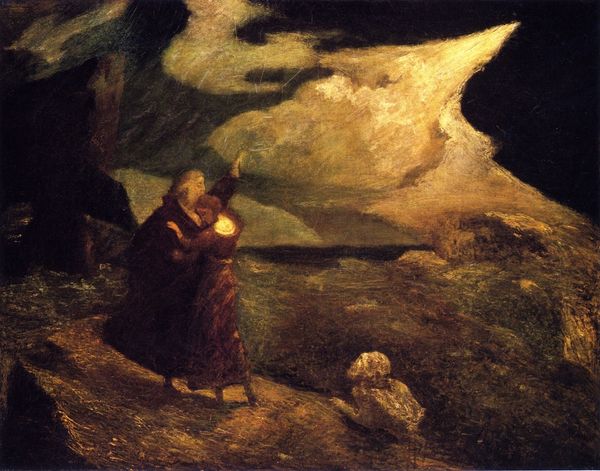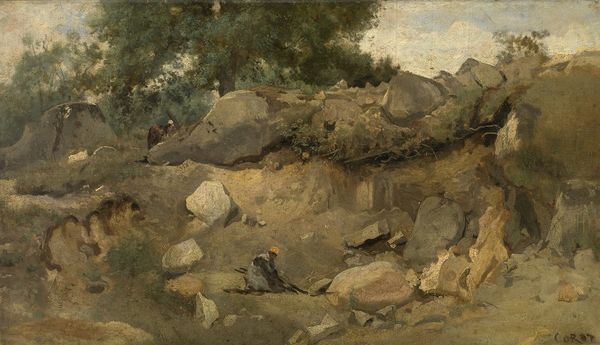
Copyright: Public Domain: Artvee
Editor: This is George Inness’s “The Hermit,” painted around 1883 to 1885, using oil on canvas. It’s striking how muted and dreamlike the colours are. The whole thing feels very introspective. What do you make of it? Curator: Ah, Inness. He invites us to ponder! I see a dialogue between light and shadow, between the tangible and the spiritual. Doesn't the very indistinctness pull you in? The Tonalist style isn't just about muted colours, but an almost musical quality—a harmony that suggests rather than dictates. What emotions does the figure evoke for you? Do you sense a stillness or something else? Editor: Definitely stillness. There's something very serene about him. It's funny, I wouldn't normally associate those kinds of colors with serenity. Curator: Funny how expectations play us! Inness plays with that tension wonderfully. Think of Romanticism's love of the sublime, toned down. And there's something uniquely American about that blending, isn't there? Finding divinity in the everyday, perhaps? Editor: It's funny you say that, it makes me think about the connection to nature at that time, how industrialization was happening, maybe people wanted to escape into nature. Curator: Absolutely! Escapism is definitely part of it, with the "hermit" motif referencing that search for refuge in nature. The placement is almost strategic; note how Inness situates the figure in-between these pockets of bright light and deep shadow! Editor: That makes a lot of sense. I really see it differently now. It’s interesting how much feeling Inness can evoke with such a restrained palette. Curator: Isn't it? Restraint, after all, can be the most powerful brushstroke of all.
Comments
No comments
Be the first to comment and join the conversation on the ultimate creative platform.
